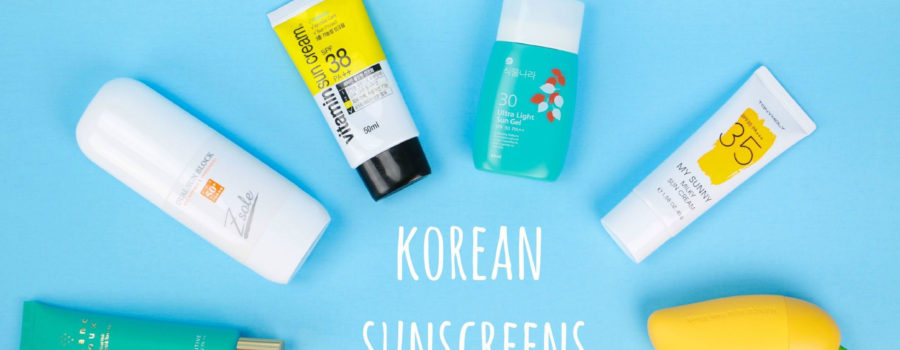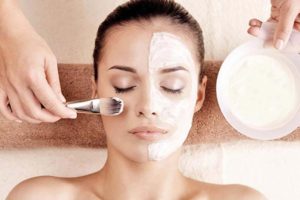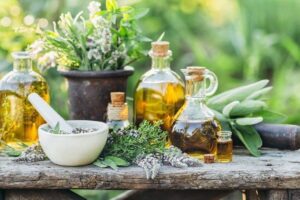Sun is quite an aggressive environmental factor for human skin. 70% of skin aging takes place because of the sun UV radiation. If you looked at sunburned skin using a microscope, you would be able to see the skin cells and blood vessels have been damaged.
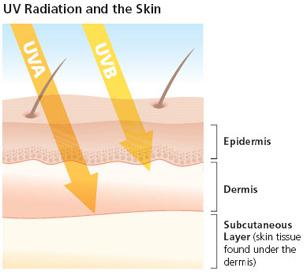
Therefore, in order to maintain skin’s beauty, health and youth, it is better to avoid sunbathing. During vacation trips to hot countries, it is necessary to protect the skin from direct sunlight with clothes and sun block creams, especially for people with the skin’s phototype I and II (white skin).
Why do you need to protect yourself from the sun?
Tan is the skin’s protective reaction to the damage caused by the sun UV radiation. The damage caused by the sun is cumulative, that is, each dose of UVt radiation is added to the already obtained and leads to the appearance of wrinkles on the skin, pigmentation and even skin cancer.
There are 2 types of ultraviolet (UV) rays that are necessary to protect the skin from:
- UVB rays in small doses cause tan, and in large doses — sunburn. Most activity is during Spring to Autumn, 10AM – 4PM.
- UVA rays are responsible for skin hyperpigmentation, uneven skin tone, dryness, freckles, and contribute to the appearance of wrinkles and premature skin aging. These rays are active throughout the year, at any time of the day. They can penetrate through glass and light clothing.

How to protect the skin from the sun?
In order to protect the skin from the negative effects of UV radiation, sun filters are used. These are substances that absorb, reflect or neutralize the effect of UV rays. Sun filters are divided into physical and chemical.
The physical filter is distributed over the surface of the skin, forming a dense, impervious film that reflects UV rays.
Substances: Zinc oxide, Titanium dioxide.
The chemical filter, unlike the physical filter, is absorbed into the stratum corneum of the epidermis, it absorbs UV rays and blocks their penetration deeper into the skin.
Substances: Avobenzone, Mexoryl, Mexoryl SX, Mexoryl SL, Tinosorb S, Tinosorb M, Homosalate, Octisalate, Octocrylene, etc.
Each of these filters has its pros and cons. Sunscreen with the best protection contains both chemical and physical filters.
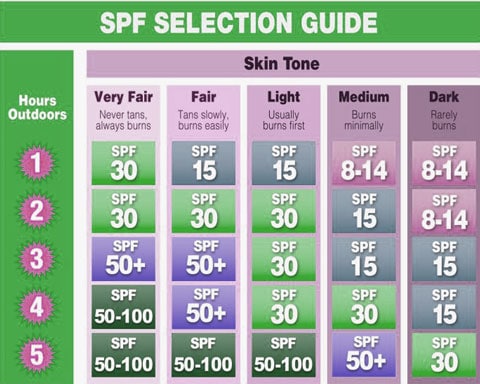
What is SPF and PA?
The main thing you need to pay attention to when choosing a sunscreen is the sun protection index, which is indicated on the package.
SPF (Sun Protection Factor) is an index of protection against UVB rays. The value specified after the abbreviation “SPF” ranges from 2 to 110+. The higher the value, the stronger the sun protection. However, it should be understood that the difference between factors, for example, SPF30 and SPF50 is very small. If SPF30 passes 3-4% of UV rays, SPF 50 would pass 2% of UV rays. Also SPF does not affect the time spent under the sun, because in 2 hours, you must apply a sunscreen on the skin again.
PA (Protection Grade of UVA) — UVA protection indices used in Asian countries. You can find other markings: LPF, IPD, PPD, or just UVA. The protective class of sunscreen is often expressed as PA+, PA++, PA+++. The more pluses, the more protection.
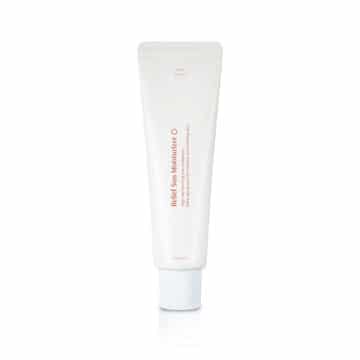
Hyggee Relief Sun Moisturizer SPF 50+, PA++++
Korean sunscreens
The culture of sun tan appeared no more than 100 years and during this time has become an industry. Korean women use sunscreen regardless of the time of year as the final stage of skin care. There are several types of sunscreens they use:
- Sunscreen, gel or lotion is the most convenient and effective form of protection for the face and body.
- Sun stick — is ideal for sensitive and easily sun damaged areas of the face — nose, ears, chin, under the eyes.
- Sunscreen powder. Use a lightweight powder with SPF30 or higher every two hours to correct makeup.
- Sun spray is applied evenly and quickly, but it is important to make sure that you have created a really good protective layer on the skin. It is better to use sprays in a ventilated area, otherwise there is a risk to sun protect your lungs from the sun as well.
- Korean manufacturers love to add the sun protection factor in cosmetics. Bases, concealers, BB/CC creams or foundations, all without exception at some level protect against UV rays.

Important!
- Avoid exposure to the sun between 10:00 and 15:00 when UV exposure is most intense.
- Apply the product on dry skin 15-30 minutes before going outside.
- Protect your skin with clothing and apply sunscreen to uncovered parts of your body.
- UV radiation is more intense closer to the equator, where the sun’s rays point to the ground at straight angles.
- UV rays, reflecting from sand, cement and snow, increase radiation, and therefore just being in the shade can not protect from sunburn.
- Do not use an artificial Solarium!
- Some medications (sulfonamides, tetracyclines, birth control and other) and cosmetics (lime oil) may increase susceptibility to sunlight.
- Protect children’s skin from the sun! Use sunscreen with a physical filter.
- Don’t forget about using sunglasses.

